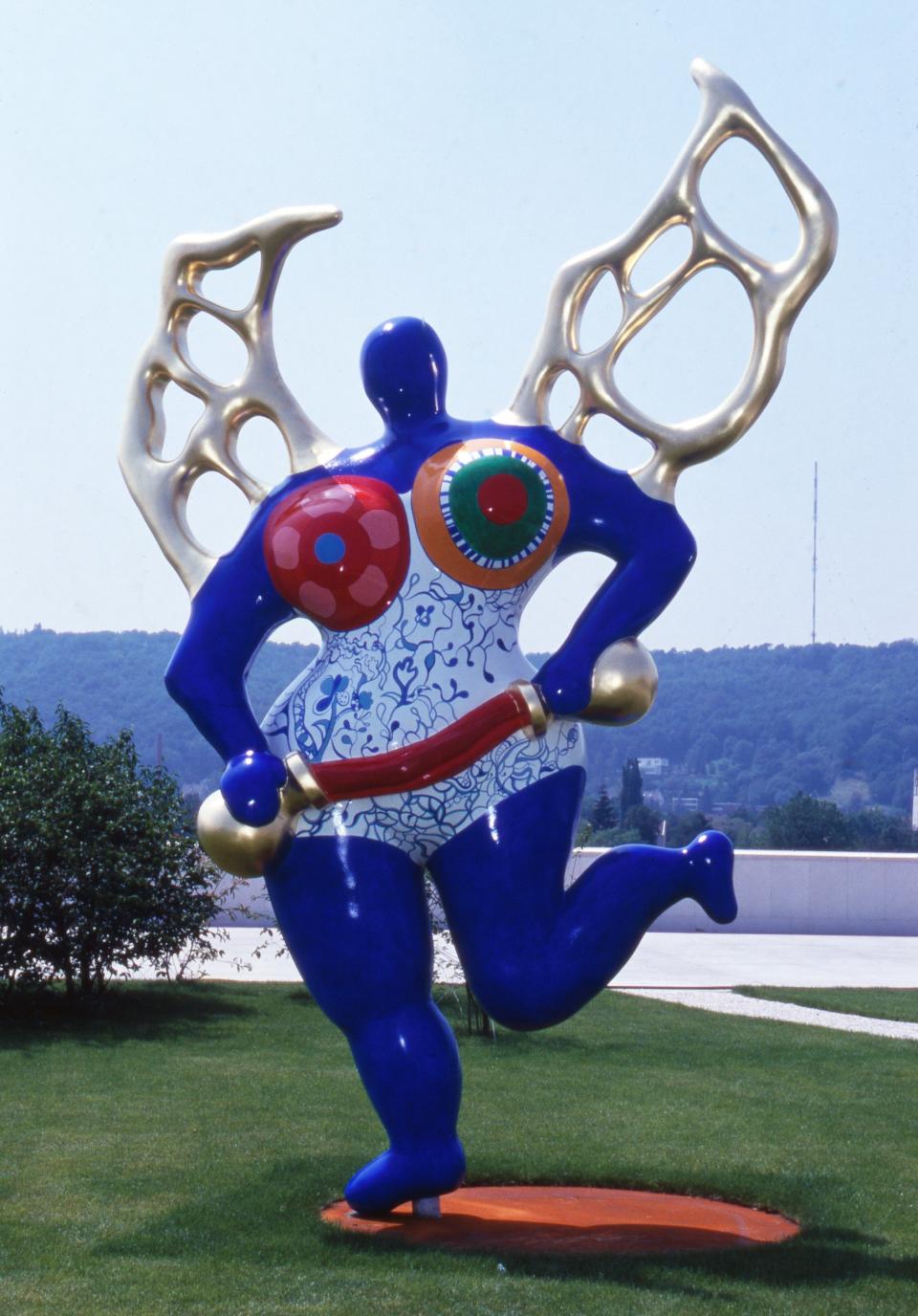Iconic Feminist Artist—And Beauty Influencer? Niki de Saint Phalle’s Lesser-Known Impact on the World of Skin Care
While Niki de Saint Phalle has long been heralded as a feminist and fashion icon, the interdisciplinary artist’s contributions to beauty are worth honoring as well. Along with her celebrations of the female form, Saint Phalle had a hand in defining the look of the iconic Swiss skin-care brand La Prairie.
Born in Neuilly-sur-Seine, France, and raised in New York City, Saint Phalle developed an art practice that pushed against conventional standards of femininity, sexuality, and worth and ultimately cemented her place as the only female figure of the Nouveau Réalisme movement. Her approach to blurring the lines between fine and commercial art and observer and muse carried over to her personal life as well. During her teenage years she built a successful modeling career appearing in the pages of Life and Vogue, and later she became a fixture of the city’s nightlife scene along with her friend Andy Warhol.
Saint Phalle’s impact on La Prairie is most evident in its Skin Caviar Collection, whose iconic blue packaging was inspired by her paintings and a chance encounter with the Swiss team in 1982. While developing an eponymous perfume line to fund her ambitious sculptural park, The Tarot Garden, Saint Phalle’s use of a shockingly bright cobalt blue caught the eye of the brand, which, at the time, shared the same design studio. “[Saint Phalle] was working at a time wherein contemporary art color palettes were really subdued,” says Ruba Katrib, who curated the “Niki de Saint Phalle: Structures for Life” exhibition now open at MoMA PS1. “I think that was definitely something that she was doing to shock but also to further complicate ideas of taste, femininity, and pleasure.”

Niki de Saint Phalle
Immediately taken by the hue that the artist herself described as “the color of joy and luck,” La Prairie ultimately decided there was only one color that could symbolize the essence of its iconic line. Continuing their appreciation for Saint Phalle, the brand spearheaded the current PS1 exhibition to celebrate and bring greater awareness of the artist’s life work.
But Saint Phalle’s legacy of mixing allure with a political edge went beyond her palette. Perhaps some of her best-known works of art, the Nanas were a collection of curvy sculptures that often appeared in motion and were intentionally seductive. “When they were first made in the ’60s, the Nanas were these exaggerated female forms, and they were large-scale, functioning as these monumental sculptures that were really a counterpoint to the representation of femininity at the time where a lot of the monuments depicting women’s bodies were made by men,” says Katrib. “The Nanas evoked goddess figures, but they were also really provocative, sometimes even being read as scandalous.”
Saint Phalle’s approach to body positivity through her sculptural work at a time when narrow ideals of the female form were still mass-produced was bold and created important dialogue around desirability and sexual attraction while helping push open the parameters of how beauty is understood. As she put it, “For me, my sculptures represent the world of the amplified woman, the delusion of grandeur of women, women in the world today, woman power.”
“Niki de Saint Phalle: Structures for Life” will run until September 6, 2021. More information can be found here.
Originally Appeared on Vogue

